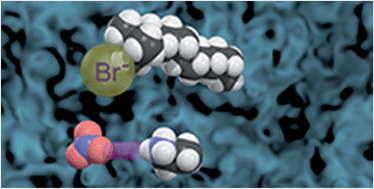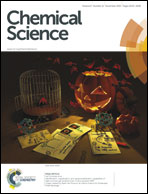The origin of surfactant amphiphilicity and self-assembly in protic ionic liquids
Abstract
The nature of amphiphilic self-assembly in alkylammonium protic ionic liquids (PILs) is examined by systematically varying the ionic structure and composition, H-bonding capacity, and nanostructure of both the PIL and micelle-forming cationic surfactant, and contrasted with self-assembly in water. Using small-angle neutron scattering, micelle structure and concentrations are determined for primary – quaternary dodecylammonium salts in nitrate and thiocyanate PILs. While the solvophobic driving force depends only on the average polarity of the PIL, surprisingly strong, specific interactions of the head group and counterion with the PIL H-bond network are found. This suggests the importance of developing designer amphiphiles for assembling soft matter structures in PILs.


 Please wait while we load your content...
Please wait while we load your content...